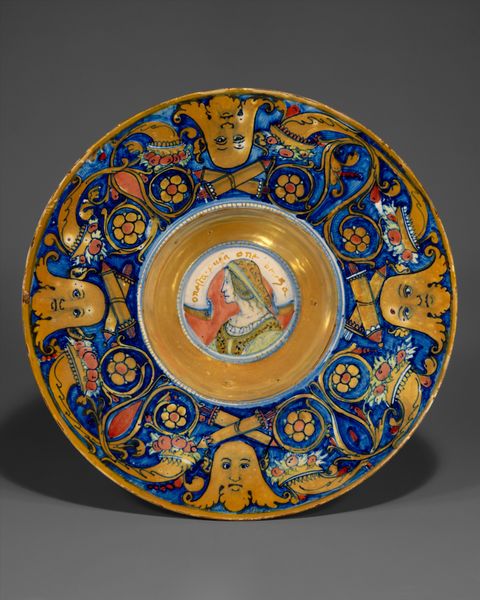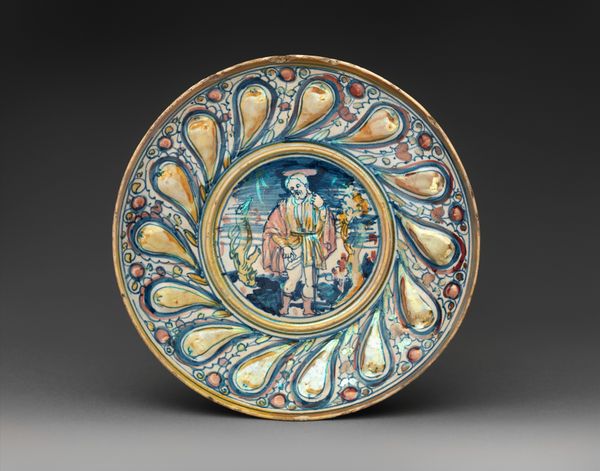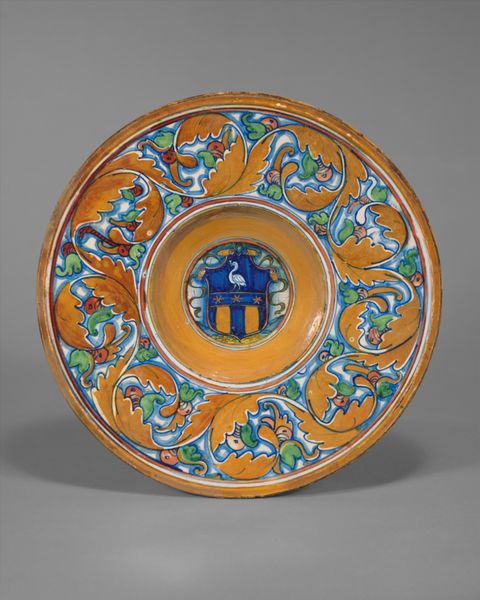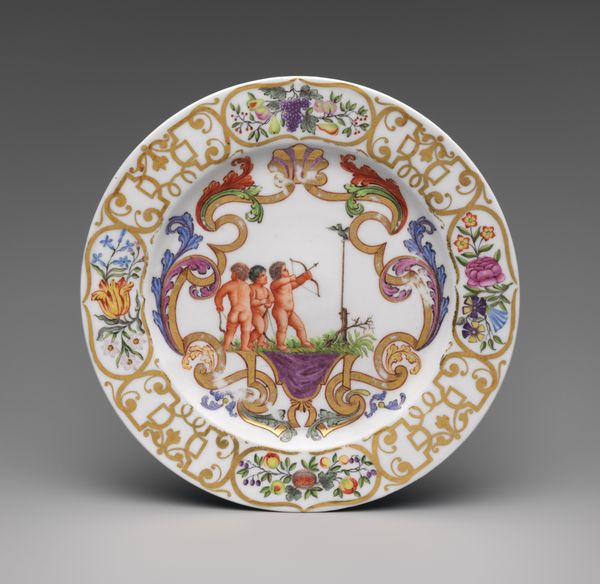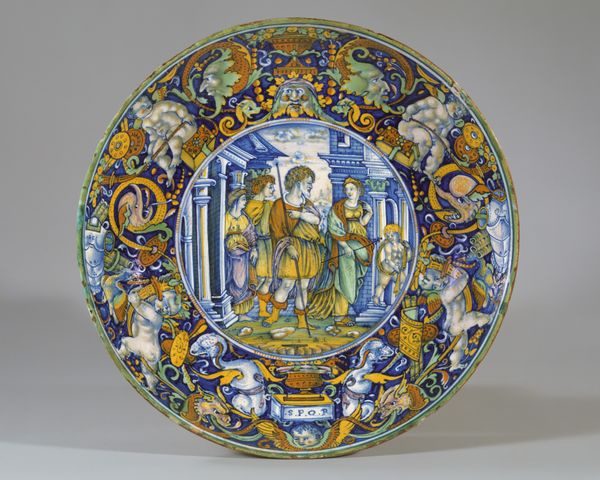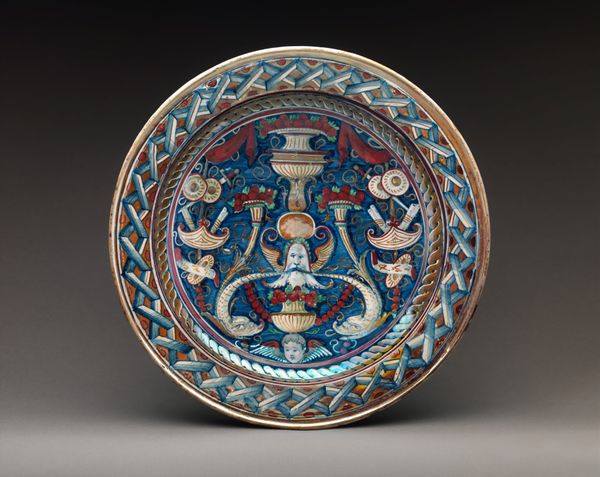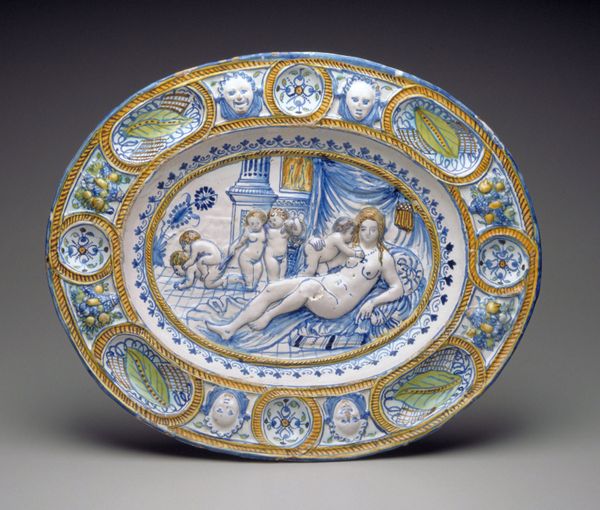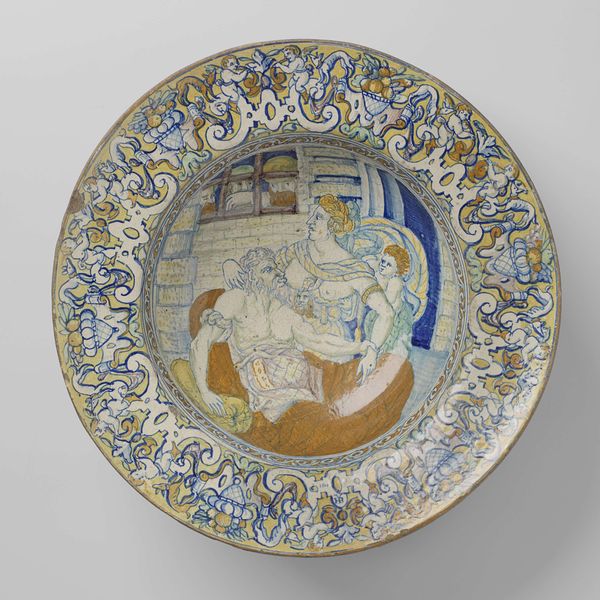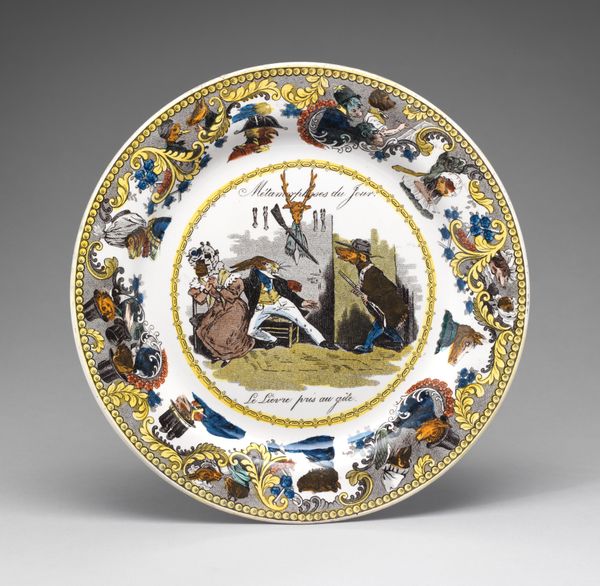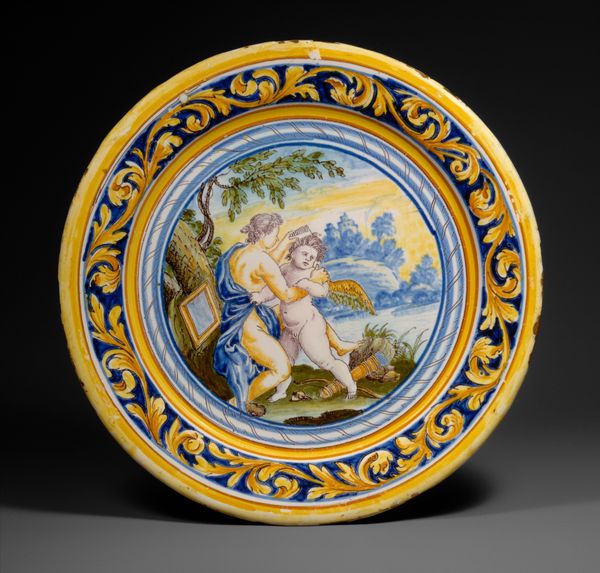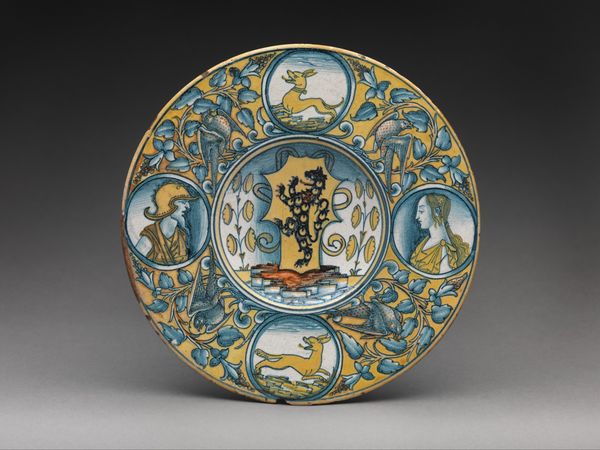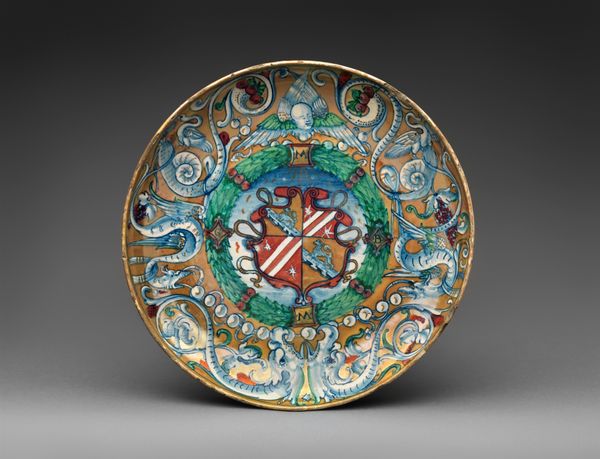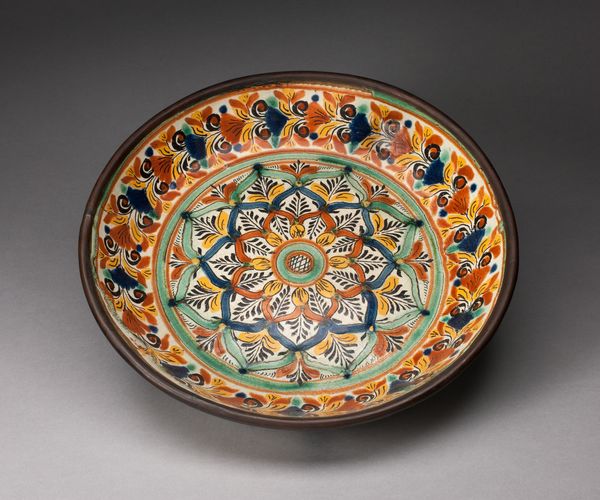
ceramic
#
portrait
#
ceramic
#
figuration
#
11_renaissance
#
decorative-art
#
italian-renaissance
Dimensions: Diameter: 10 3/16 in. (25.8 cm)
Copyright: Public Domain
Curator: This is a stunning ceramic plate, a 'tondino' crafted by Maestro Giorgio Andreoli between 1517 and 1521. The Metropolitan Museum of Art treasures this piece as an example of Italian Renaissance decorative art. Editor: Wow, it feels like a bold statement. All that vivid gold and red… is it trying to tell me something? The woman in the center… she seems important, and almost confrontational with that intense gaze. Curator: Indeed. The piece features a portrait bust, a common motif in the Renaissance aimed to celebrate specific individuals. We see the portrait of a noble woman framed in the middle of the plate with her name labeled above: "PULISENA B". The surrounding ornamentation offers clues about her identity and the cultural values of the time. Editor: So it's not just decoration, it's layered with symbolism, hinting at social status and probably, a certain level of power? Curator: Absolutely. Plates such as this were status symbols in their own right, intended to impress guests with both the artistry of the ceramic and the wealth of the owner. It’s amazing how the artist blends portraiture with the surrounding emblems to create a complete picture of an individual and their place in society. You can see grotesque figures among other intricate figures. Editor: I can imagine this in a brightly lit hall. Though the aesthetic is striking, I find myself wondering, what impact did it have on ordinary folk, the masses excluded from this opulent world of art? Was it a celebration of culture, or just another divide between the haves and have-nots? Curator: That’s a pertinent question to ask, and it touches on how we interpret art's role in society. While these works indeed reflect elite patronage, they simultaneously reflect cultural values shared at large—beauty, honor, skillful production. The availability for some creates inspiration, a possibility, however distant, of reaching that ideal. The Italian Renaissance redefined visual representation. Editor: Still, examining this now I am conflicted by this dance between skill and access. Art both reflects its time and leaves the shadow of history with so many unanswered questions. It's the silences as much as the loud statements of gilded wealth that make me sit up and really question what and who this art serves, served, and could serve. Curator: A valid question, and it emphasizes the vital and changing impact art holds through time.
Comments
No comments
Be the first to comment and join the conversation on the ultimate creative platform.
